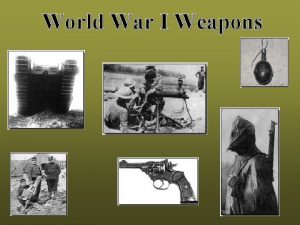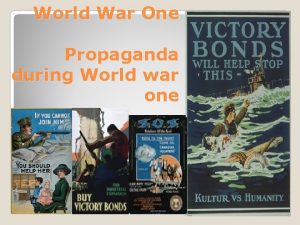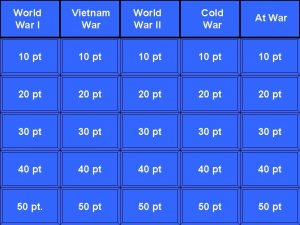ENGLAND DURING WORLD WAR I Women during the












- Slides: 12

ENGLAND DURING WORLD WAR I


Women during the war

Some English women at war were nurses, they were not happy because they saw all of the pain and anger. Over the course of the war: • 200, 000 women took up jobs in governmental departments. • 500, 000 took up clerical positions in private offices. • 250, 000 worked on in agricultural positions. • 700, 000 women worked in the munitions industry, which was dangerous work. • Many more women did hard heavy work, including ship building and furnace stoking. These types of jobs had excluded women prior to the war. • In July 1914, before the war broke out there were 3. 2 million women in employment. This had risen to 5 million by January 1918.

Food and rationing – at home

• Rationing means that food was only allowed portions because food was scarce as lots of food was sent away to feed the soldiers. • There was also less food arriving from other countries because ships bringing supplies were often attacked by German submarines called U-boats. • In 1918, new laws set by the government introduced rationing, a way of sharing food fairly. • Sugar, meat, flour, butter, margarine and milk were all rationed so that everyone got what they needed. • Each person had special ration cards, even King George and Queen Mary. • The rules of the rationing were very strict. Anyone found cheating could be fined or even sent to prison.

Food and rationing – the soldiers

• At the beginning of the war, soldiers got just over one pound of meat, the same amount in bread and eight ounces of vegetables each day. • By 1917 the official ration for the average British 'Tommy' was much smaller, it was reduced to just 6 ounces of 'bully beef' but the soldiers on the actual front line got even less meat and vegetables than this. • Shortage of fresh vegetables and fruit caused many soldiers to suffer from upset stomachs. • Brown stew was delicious but it got ruined by the mud.

In the trenches

• Trenches are unhygienic and people got trench foot because of the wet conditions. • Front line soldiers could be expected to advance across no man's land towards the enemy trenches, in the face of shelling, machine gun fire and barbed wire defences. Thousands of casualties could be expected in such a "push" or attack. • Soldiers had to live with the constant danger of enemy shelling and snipers. • The sound of artillery bombardments sometimes resulted in soldiers suffering from a breakdown known as "shell shock". • Attempts were made to end the deadlock of trench warfare, these included the introduction of poison gas attacks and the tank. • 10% of all the soldiers who fought in World War 1 were killed.

The soldiers of World War 1

• At the outbreak of war in 1914, the British Army had 700, 000 available men. • Among them were 250, 000 boys and young men under the age of 19, the legal limit for armed service overseas. • The British army was the only army to wear any form of a camouflage uniform. • The Brodie helmet was the first protective steel helmet used during World War 1 but at first it was only used on the front line because there were not many of them. • The main weapon used by British soldiers in the trenches was the bolt-action rifle, it could fire 15 rounds a minute and a person 1, 400 metres away could be killed.
 King of england during revolutionary war
King of england during revolutionary war During world war 2 this poster was used primarily to
During world war 2 this poster was used primarily to Why did england and spain go to war
Why did england and spain go to war Treaty of nanjing in 1842
Treaty of nanjing in 1842 Ohio militia
Ohio militia Rachel kimery
Rachel kimery Hyposecretion of growth hormone
Hyposecretion of growth hormone James madison war at home
James madison war at home Vietnam war
Vietnam war Welcome 1 unit 10 lesson 1
Welcome 1 unit 10 lesson 1 Sclc and sncc venn diagram
Sclc and sncc venn diagram Why did josette dugas want to go to war
Why did josette dugas want to go to war Sein i datid
Sein i datid























